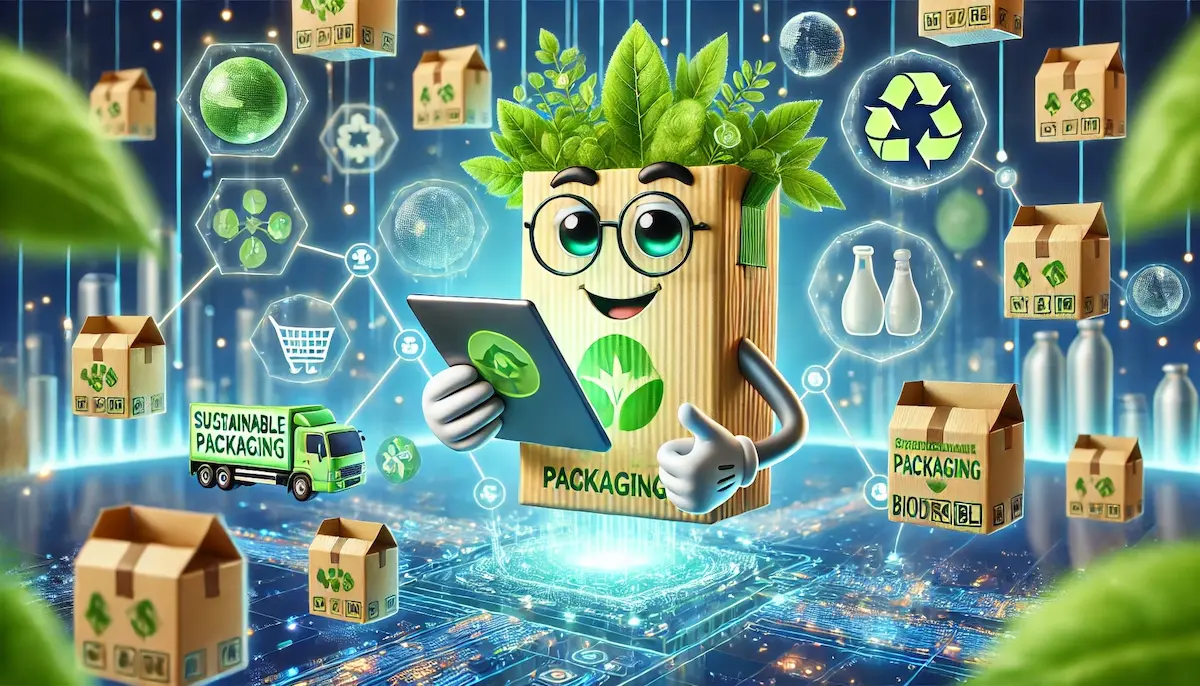Eco-friendly packaging, also known as sustainable packaging, refers to the use of materials and design techniques that have a minimal impact on the environment. This type of packaging aims to reduce waste, conserve resources, and lower the carbon footprint associated with packaging production and disposal. As consumers and businesses become more environmentally conscious, the demand for eco-friendly packaging solutions is growing.
What is Eco-Friendly Packaging?
Eco-friendly packaging is designed to be sustainable throughout its life cycle, from production to disposal. It typically involves using materials that are biodegradable, recyclable, or made from renewable resources. The goal is to reduce the environmental impact by minimizing waste, conserving resources, and reducing greenhouse gas emissions.
Key Characteristics of Eco-Friendly Packaging
Biodegradable and Compostable Materials
Biodegradable packaging materials break down naturally over time through the action of microorganisms. Compostable materials go a step further by breaking down into nutrient-rich compost that can enhance soil health. Common biodegradable and compostable materials include:
- Plant-Based Plastics: Made from renewable resources like corn starch, sugarcane, and potato starch, these plastics can decompose naturally.
- Paper and Cardboard: Easily recyclable and biodegradable, these materials are often sourced from sustainable forests.
- Biofilms: Thin films made from natural polymers that can replace traditional plastic films in packaging.
Recyclable Materials
Recyclable packaging materials can be processed and reused to create new products. This reduces the need for virgin materials and helps conserve resources. Examples include:
- Glass: 100% recyclable and can be recycled indefinitely without loss of quality.
- Aluminum: Lightweight, durable, and highly recyclable, aluminum is often used for beverage cans and food packaging.
- Certain Plastics: Plastics labeled with recycling codes 1 (PET), 2 (HDPE), and 5 (PP) are commonly recyclable.
Reduced Material Use
Eco-friendly packaging often involves using less material overall, reducing waste and resource consumption. Strategies include:
- Lightweighting: Designing packaging to use less material while maintaining functionality and protection.
- Minimalist Design: Using simple, minimal packaging that eliminates unnecessary components.
- Concentrated Products: Packaging products in concentrated forms, such as detergents or beverages, to reduce packaging size and weight.
Renewable and Recycled Materials
Using materials sourced from renewable resources or recycled content helps reduce the environmental impact of packaging. Examples include:
- Bamboo: A fast-growing, renewable resource used for packaging and product containers.
- Recycled Paper and Cardboard: Made from post-consumer waste, reducing the need for virgin paper production.
- Recycled Plastics: Plastics made from post-consumer or post-industrial plastic waste.
Benefits of Eco-Friendly Packaging
Environmental Protection
Eco-friendly packaging reduces pollution and conserves natural resources by minimizing waste, using renewable materials, and promoting recycling. It helps lower the carbon footprint associated with packaging production and disposal.
Resource Conservation
Using sustainable materials and reducing packaging waste conserves valuable resources like water, energy, and raw materials. This supports long-term environmental sustainability and reduces the strain on natural ecosystems.
Waste Reduction
Eco-friendly packaging design minimizes waste generation by using less material, encouraging recycling, and promoting biodegradability. This reduces the amount of waste sent to landfills and incinerators, decreasing environmental pollution.
Consumer Appeal
As awareness of environmental issues grows, consumers are increasingly seeking out eco-friendly products. Sustainable packaging can enhance a brand’s reputation, attract environmentally conscious customers, and differentiate products in the marketplace.
Regulatory Compliance
Many regions are implementing stricter regulations on packaging waste and environmental impact. Adopting eco-friendly packaging practices helps businesses comply with these regulations and avoid potential fines or penalties.
Challenges and Future Outlook
Despite its benefits, eco-friendly packaging faces challenges such as higher costs, limited availability of sustainable materials, and the need for infrastructure to support recycling and composting. However, ongoing advancements in technology and materials science are helping to overcome these challenges.
The future of eco-friendly packaging looks promising as innovation and consumer demand drive the development of new sustainable materials and packaging solutions. Key areas of focus include:
- Advanced Materials: Research into new biodegradable, compostable, and recyclable materials that offer improved performance and lower environmental impact.
- Circular Economy: Designing packaging systems that support a circular economy, where materials are continuously reused and recycled, minimizing waste.
- Smart Packaging: Integrating technology into packaging to enhance functionality, reduce waste, and improve the consumer experience.
- Collaboration: Partnerships between businesses, governments, and consumers to promote sustainable packaging practices and develop supportive infrastructure.
As society continues to prioritize sustainability, eco-friendly packaging will play a crucial role in reducing environmental impact and supporting a more sustainable future.
Blockfine thanks you for reading and hopes you found this article helpful.
